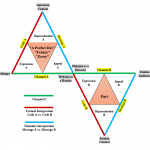Monireh Sadat Razavi Ganji
- Faculty of Art and Culture
- Literature, Visual Culture and Film Studies
- ma
- TOWARD A “CULTURAL TURN” IN ADAPTATION STUDIES:A Methodological Framework for Studying Adaptation with a Focus on the Case of Dariush Mehrjui’s Pari
- Tutor(s): Professor Daniele Monticelli
Despite more than decades of academic work to clarify the relation between translation and adaptation, the question of whether Adaptation Studies and Translation Studies should be seen as one discipline, as two disciplines, or rather as one being a subaltern to the other remains debatable. After a brief review of the related literature of major ways through which the boundary between Adaptation studies and Translation studies has been demarcated to date, I will map them as two separate disciplines that are related and similar though none is a sub-category of the other. On the hypothesis that the major common characteristic between Translations and Adaptations (such as the involvement of a prior text or Text 1 in the creation of a target text or Text 2) provide the ground for an exchange of critical perspectives, concepts, and methodologies, as a case study, this research focuses primarily on answering the following questions: How are translation and adaptation related? Is there any way to apply theories and methodologies from Translation Studies to the study of adaptations? To answer these questions, in Chapter One, I will explore the theories of Patrick Cattrysse and Lawrence Venuti as two translation scholars who suggest the application of translation theories and methodologies in the study of adaptation. While Cattrysse explores the use of the Polysystem Theory, Venuti employs the applicability of the Hermeneutic Model and Interpretants in Adaptation Studies.
After commenting upon the similarities and differences between their theories, I will present my framework of studying adaptation which is a synthesis of Cattrysse’s and Venuti’s theories in the form of a visual model. Since my conceptual model highlights the importance of the contextual, communicative, and intertextual factors in studying adaptation (which is similar to the cultural turn in the history of Translation Studies), I will lay its foundation based on Karl Ludwig Bühler’s Organon Model of Communication and Roman Jakobson’s Model of Six Communication Functions. In the analysis part provided in Chapter Two and Chapter Three, I will apply my model to the case of Dariush Mehrjui’s Pari, an Iranian cinematic adaptation of Salinger’s “Franny”, “Zooey”, and “A Perfect Day for Bananafish”. After exploring how thematic and formal aspects of Pari resemble or diverge from Salinger’s three stories, I will discuss and conclude that Mehrjui constitutes an adaptation strategy that is both creative and imitative. Such a strategy that involves inevitable alterations, appropriations, and localization of the adapted texts enables the director to decontextualize and recontextualize Salinger’s three American stories and lay the groundwork for further reinterpretation and revaluation of the stories in a new Iranian context by means of a different medium, cinema.


